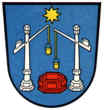
Updated 11 October 2024
Bad Salzuflen was the responsibility of the following higher formations:
3rd Infantry Division 28 May 45
52nd (Lowland) Infantry Division 18 Aug 45
4th Armoured Brigade 15 May 46
7th Armoured Division 15 Jul 46
Hannover District 15 Jan 48
7th Armoured Division 1 Mar 49
Requisitioned civilian accommodation
609th Infantry Regiment RA 1945 (1)
Armoured Replacement Group RAC 1945-1946 (2)
27th Belgium Fusilier Battalion 1945-1946 (3)
14 Field Survey Company RE – squadron from 1 Apr 47 1946-1948 (4)
several other survey units were stationed in the town details to follow
(1) arrived from Süchteln west of Krefeld 3 Jun 45 – Kirchstraße 3 – disbanded 6 Jun 45
(2) arrived from Minden 8 Oct 45 – Hindenburgstraße – disbanded 22 Jan 46
(3) arrived from Lippstadt less one company – 22 Nov 45 to 6 Jun 46
(4) arrived from Walstedt south-east of Neumünster 22 Jan 46 – Amt Rehme north-east of Bad Salzuflen – Kinderheilanstalt (Children Hospital) Moltkestraße 5 Nov 46 – moved to Minden 24 Sep 48
More to follow
Source: 21st Army Group later British Army of the Rhine to 1 Mar 49
Part II
SOXMIS (Soviet Military Mission) – moved to Bünde 1946
During the summer of 1952 I was serving as a LCpl with 1 Corps Provost Company, CRMP on exercise somewhere in the Teutoburger Wald, when one of our chaps spotted a car belonging to the Soviet Military Mission speeding through our territory, well outside its permitted area. We were waiting for a big airborne drop and the Soviets were forbidden to come anywhere near. Despite a chase, the car had disappeared and although we spent 2 days and 2 nights looking, we could not find it. (Incidently, about halfway through the second night I discovered that I could sleep standing up without any problem!)
Subsequent to this RMP NCO’s were drawn from all over BAOR, paired up and sent to Wolfsburg where each pair were given a new Volkswagen.
The Soviet Military Mission HQ was situated in Bad Salzuflen, their house occupied a position in the fork where 2 roads met, near to the town centre.
2 RMP vehicles were on duty, 24 hours a day, and one car followed every Soviet vehicle which left their compound. The Soviets played cat and mouse with the RMP and would normally head straight to the zone border where they waved goodbye to their escort.
This went on for some months, and I only knew about it because one of my friends from 2 Div Provost Company RMP in Dusseldorf was recruited into the scheme.
C T Shuter
